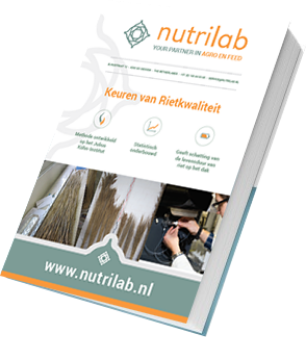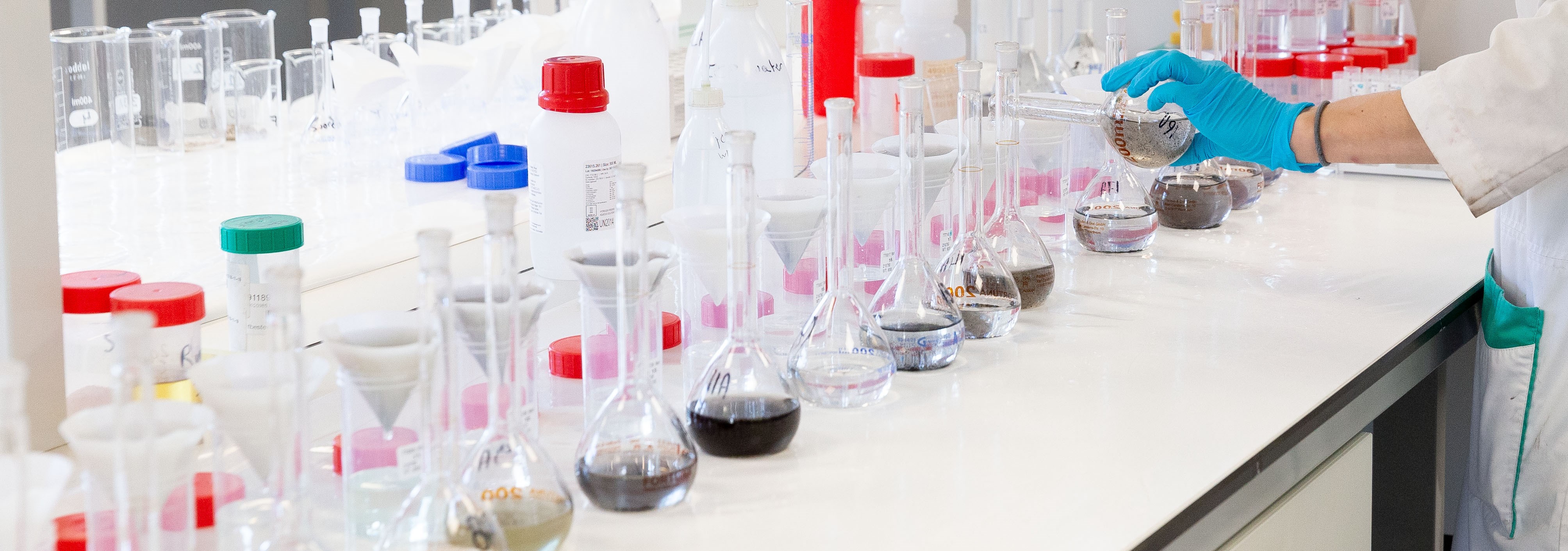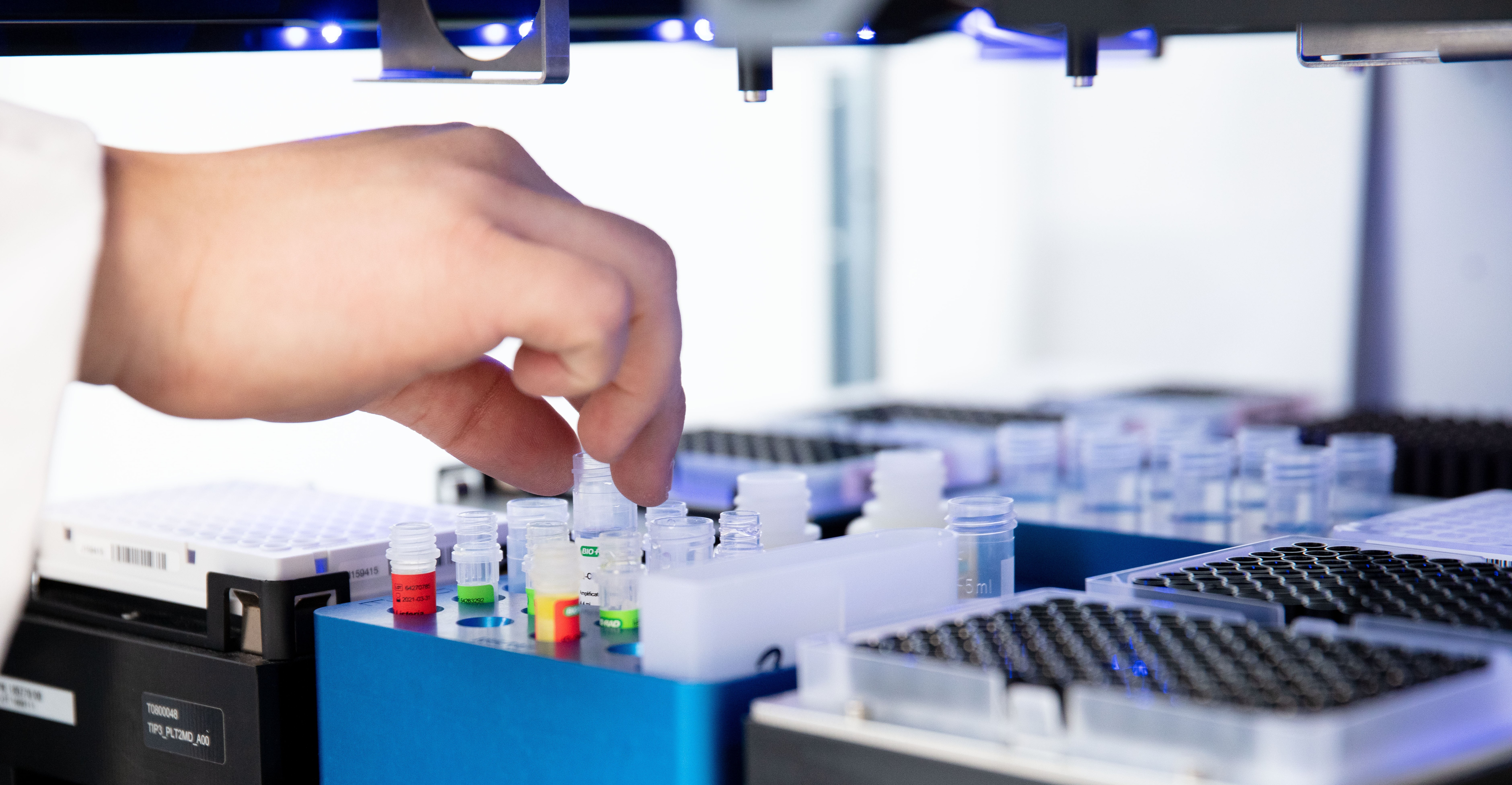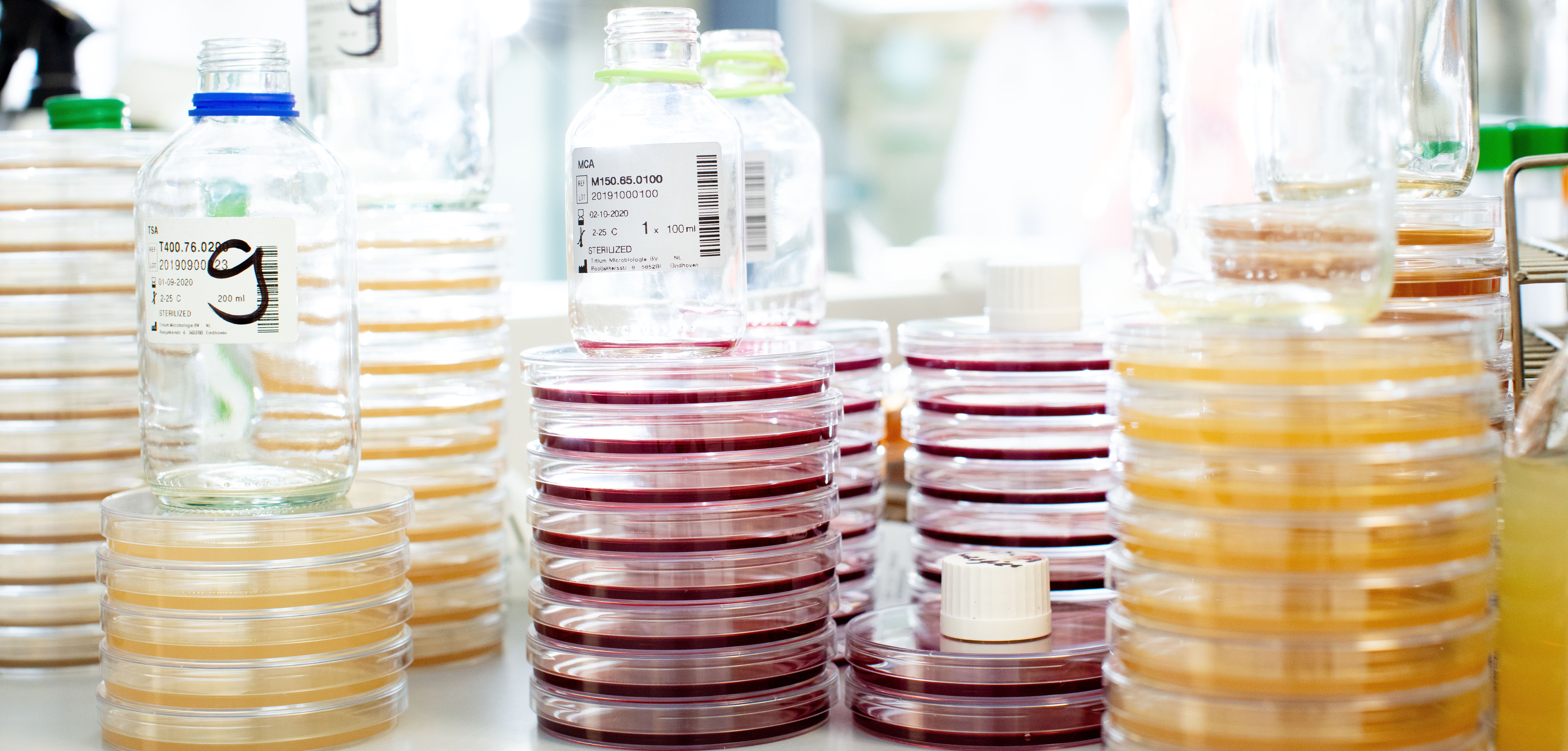
Would you like to be kept informed of developments?
In our free white paper, we share information about the new rules of legislation, innovations in analysis and we tell you about the digitisation of the market. Download our white paper for free!
 Analysis Selector
Analysis Selector
One of the challenges facing businesses in the food industry is food safety. Nutrilab has grown into a partner for numerous companies and organisations who are actively involved in the processing, production and inspection of food ingredients and food products. For food companies, quality control is determined through various regulations such as EG 2073/2005, EG 1169/2011 and EG 1881/2006 to guarantee food safety within the market. These standards prescribe which conditions should be met in a product and how information is presented to consumers. Nutrilab can assist food businesses through the entire quality-control process by offering a wide range of tests and services.
The food label review and marketability report are compulsory for various foodstuffs. Food-labelling regulations are set at the European level in regulation EU 1169/2011. This regulation outlines the requirements and the do’s and don’ts for labelling foodstuffs, such as label size, the font size on the label and which ingredients it is compulsory to list. Allergens are also required to be clearly distinguished and indicated, often done by underlining the allergen or marking it in bold. The nutritional value of the product must also be visible on the label. The nutritional value is calculated by carrying out analyses on the product using the big 8 method.
The product analysis, the food label review, and a complete report can all be provided by Nutrilab. The food label review is carried out in several languages. A check is also carried out as to whether the claims on a label are allowed. The marketability report provides a summary of all these checks.
An analysis is essential to determine the correct nutritional values on a label. The nutritional value of a product is analysed using a big 8 nutrient analysis. The big 8 includes seven tests: crude protein, crude fat, dietary fibre, starch, sugar, sodium and fatty acid composition. The fatty acid composition is required to calculate the proportion of saturated fats. The eighth parameter, the carbohydrate content, is determined from the starch and sugar content. Based on these details, the energy value and sodium values can be determined. Each foodstuff requires a unique procedure with regards to sample collection, extraction, decomposition and analysis techniques. Nutrilab has extensive experience with carrying out nutritional value testing on a wide range of food products.

Before marketing a food-safe product, there should be an adequate guarantee that there are no harmful chemical and microbiological contaminants present in any part of the food chain, from raw materials to the final consumer product.
EU Regulation EG 1881/2006 is the leading standard in this regard, where regulations for contaminant levels have been established at a European level.
Some examples include: heavy metals which are taken up by plants through polluted groundwater; pesticides, also known as herbicides or crop protection products, used during the cultivation of crops; and mycotoxins, toxic waste products produced by moulds. These occur during cultivation (cold and wet summers) or heating during storage and transport. Dioxins and PCBs are released through combustion and enter the atmosphere. These compounds accumulate in the body and can become harmful in the long term. PAHs are also produced during combustion, mainly when organic material is only partially combusted.
Companies in the food industry must show that they meet the required standards for contaminants. Nutrilab can provide customers with these analyses.
Discover more about contaminants here.
Fraudulent practices regarding foodstuffs undermine the trust that consumers must have in their food products. The consumer should be able to take for granted that the product they buy is precisely the product they pay for. Through quality control of both the raw materials and the final product, food fraud can be prevented. Nutrilab has the option of detecting different types of fraud. Near-infrared (NIR) analyses are used to guarantee the authenticity of herbs and spices. Different forms of additives can be analysed using microscopy. In addition, meat fraud can be discovered with various DNA analyses. Depending on the customer needs, a plan can be drawn up to eliminate potential fraud.

In a production environment where foods are being prepared, proper general hygiene is an essential basis for guaranteeing food safety. Monitoring pathogens such as Listeria monocytogenes and Salmonella is critical here. There are various techniques available for monitoring and ensuring hygiene. These can broadly be divided into three categories: air, surface and water sampling.
Air samples are taken with an air sampler. This technique passes a set amount of ambient air over a culture, which is then incubated. It is not only possible to sample the ambient air using this technique, but the quality of pressurised air can also be analysed.
There are several methods available for surface sampling. Hygicults and contact plates are used for flat surfaces such as tables and transport belts. Swabs can also be used for flat surfaces and other less accessible locations or uneven surfaces such as door handles.
Water sampling is critical for food safety management. Water samples should be collected in sterile sampling jars to prevent contamination of the sample.
The sample collection for environmental research may be carried out by the manufacturer or by one of Nutrilab’s samplers.
Regulation EG 2073/2005 defines the microbiological criteria food-producing companies should meet. Producers must research whether their products can meet these criteria during the entire shelf life of a product. This is done through shelf-life studies. These studies monitor the development of microbiological organisms in the product from the moment it is produced to the final expiration date. Nutrilab also has facilities to carry out challenge tests. This technique determines the growth potential of Listeria monocytogenes in a product. Before the listeria study, a model is created to determine whether a product is a potential breeding ground for listeria.
Read more about listeria studies here.


We will be happy to visit you to discuss any quality questions or issues you may have.
Plan an advisory meeting
In our free white paper, we share information about the new rules of legislation, innovations in analysis and we tell you about the digitisation of the market. Download our white paper for free!


Powered by Wallbrink Crossmedia